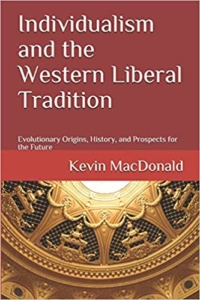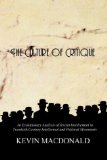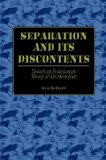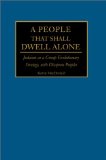In the near future, America will have a White minority.
We, the nominally Christian masses of European ancestry, will be surrounded by a sea of strange faces. All these polyglot multitudes, who have been teleported into America — and mainly because of Jewish influence against the will of its White majority — are now pitted against us. They are likely to be our new enemies. They have been shoehorned into America for one purpose only: to make life tough for us. They compete with us for vanishing jobs and diminishing resources, and inevitably they will obtain political power that they will use against us.
The Multicultural Menagerie
One of the many “benefits” of multiculturalism is that loyalty issues come to the fore. Exhibit A for this is the notorious Jonathan Pollard spy case.
Jonathan Pollard, one in a long line of Jewish American spies. (See here). The total number of Jewish spies convicted or expelled from the US exceeds the number of spies from all other ethnic groups. As Jews make up only 2% of the American population and blacks 14%, there ought to be seven times as many black spies. In fact, there are none.
Requests for Pollard’s release from Jewish sources have been endless — Yitzhak Rabin (1995), Benjamin Netanyahu (2002), Ehud Olmert (2008). But Pollard remains safely behind bars, as if to show us that the old dog still wags its tail. Harvard law professor Alan Dershowitz expresses his anger thus: “As an American and as a Jew, I hereby express my outrage at Jonathan Pollard’s sentence of life imprisonment for the heinous crime he flagrantly committed.”
Sorry, that’s a misquote! It should be: “…for the crime to which he pleads guilty.” (Pleading guilty to a crime, in Dershowitz’s bizarre Alice-in-Wonderland world, is clearly tantamount to being innocent or at least getting a soft sentence.)
It gives me no pleasure to point out that Israel’s present Prime Minister, the thuggish ‘Bibi’ Netanyahu, resorted to moral blackmail in 1998 at the Wye River Conference in order to secure Pollard’s release. “If we signed an agreement with Arafat, I expected a pardon for Pollard,” he said. Quid pro quo, you see. If you give us Pollard, we’ll give you the promise of peace.
“Once we squeeze all we can out of the United States it can dry up and blow away,” the same Netanyahu reportedly told Pollard, upon exiting Pollard’s prison cell after a friendly social call in 2002. This quote, which is cited all over the Internet, is the sort of thing that, even if inaccurate, reflects the reality that Israel and its Lobby in the US are exploiting American blood and treasure on behalf of Israel.
This is the man who refuses to desist from his ongoing dispossession of Palestine, while at the same time expecting American largesse in exchange for his intransigence — and more American lives, needless to say, lost in foreign wars fought for Israel.
It’s only in America, it seems, that the piper seems unable to call the tune. Another quote:
Netanyahu: “Watch it, boy, don’t dare speak to me like that! WE JEWS CONTROL AMERICA! Ever heard of the Samson Option?”
Okay, he didn’t say that! But it’s what he could have said in a parallel universe. It’s what he might well have said in this universe, if he was speaking his real thoughts.
Even American Vice-Presidents, Zionist lackeys though they be, visit Israel only to get spat upon. How do they react to their ritual humiliation at the hands of their Jewish masters? As the spit lands on their faces, they ask if it’s raining.
“It’s good to be home!” VP Joe Biden gushes, arriving in Israel on an official visit. “The U.S. has no better friend than Israel! Progress occurs in the Middle East when everyone knows there is simply no space between the United States and Israel!”
Stick a tail on this guy and he’d win first prize in a poodle competition.
As if to emphasize the point of Israeli muscularity, Israeli military historian Martin van Creveld invokes the dreaded Samson option.”We possess several hundred atomic warheads,” he reminds us ominously, “and can launch them at targets in all directions, perhaps even at Rome. Most European capitals are targets of our air force.”
Europe, watch out.
Meanwhile, in America, the Jews have never had it so good. In 2009, 35% of the richest men in America were Jews. This 2% of the population who are the wealthiest group in America and now comprise 25% of Ivy League undergraduates and 40% of Harvard alumni, are indeed voluble in their never-ending complaints about their victimhood. America’s 400 richest men, according to a report in the New York Times (March 23, 2009), own as much as 22% of the nation’s total wealth, and around 140 of these multibillionaires are Jews.
“Ah, how sweet it is to be Jewish at the end of this 20th century,” Alain Finkielkraut wrote in Le Monde in 1998. “We are no longer history’s accused, but its darlings. The spirit of the times loves, honors, and defends us, watches over our interests; it even needs our imprimatur. Journalists draw up ruthless indictments against the Nazis and their modern collaborators. Churches repent. States do penance.”
White America smiling … but not for long
You are this young couple. Here’s what happens to you. This is your fate:
You are kidnapped by four Blacks, three men and a woman, while out on a date. For the next twenty-four hours, you are subjected to systematic torture. Both of you are gang-raped. You, the young woman, are forced to watch your boyfriend being sodomized by three black men, one after the other. What does the black woman do? She stands in the background, watching, a kitchen knife in her hand, waiting to cut off your sweetheart’s penis. This happens. Maybe they all take turns to saw off your darling’s penis. It’s your turn now, White Lady. Let’s see your tits, Bitch! Hey man, pass me that knife! Yes, White Lady, it’s TIME FOR YOUR BREASTS TO BE CUT OFF! They rape you first. They make you drink cleaning fluid. And then they hack off your breasts. Finally, they strangle you to death.
No point going on. Both bodies are found dumped on waste ground later, riddled with bullets.
This happened in January, 2007, near Knoxville, Tennessee, to Christopher Newsom (23) and his girlfriend Channon Christian (21) This whole grisly affair of Black-on-White violence was carefully covered up by the mainstream media. Who owns the media? Don’t even ask!
“The details of the crimes were considered so horrific,” we are told, “that the authorities would not release accounts to the news media for fear of putting Blacks in a bad light and upsetting race relations. The facts emerged only when some enterprising reporters checked documents filed in federal court.”
This case is exceptional only for its psychopathic brutality. Thousands of other cases occur in which Black-on-White rapes without murder feature, as well as countless cases of unprovoked beatings and verbal abuse of Whites.
Sarah Kreager, 26, suffered broken facial bones and other injuries after she was punched, kicked and dragged off a bus one Tuesday afternoon in January, 2009, by nine black students. Her boyfriend was also severely beaten up. There had been no provocation.
Apart from perfunctory local coverage with no mention of race, these crimes, almost without exception, go unreported by the media. (See here).
These are grounds for despair. Our new elites are of course behind this — we all know that now — deliberately fomenting racial hatred, while portraying White Americans as the underlying cause of that hatred.
Here’s an eerie picture of a future dystopia, the unimaginably grim America that awaits us:
Lasciate ogni speranza, voi ch’entrate! — Abandon hope, all ye who enter here! (Dante’s Inferno)
It’s time to discuss despair. Despair in general. Let’s talk about our despair.
Creating Despair
Who began the Great Despair? Probably Darwin, without meaning to do so. It’s perhaps worth pointing out that the happiest and most optimistic poem ever written was penned a mere eighteen years before the Darwinian bombshell of 1859. Here it is. Savor it slowly. It was never to be like this again:
The year’s at the spring
And day’s at the morn.
Morning’s at seven,
The hill-side’s dew-pearled,
The lark’s on the wing,
The snail’s on the thorn,
God’s in his Heaven —
All’s right with the world!
— Robert Browning, Pippa Passes, 1841
With the publication of Darwin’s Origin of Species, the mood was to change abruptly. A black cloud settled over the human psyche. Nietzsche was to cry out in anguish, “GOD IS DEAD!” And then, eight years after Darwin’s deathblow, came these — the noblest and most heartrending lines in the English language:
Ah, love, let us be true
To one another! for the world, which seems
To lie before us like a land of dreams,
So various, so beautiful, so new,
Hath really neither joy, nor love, nor light,
Nor certitude, nor peace, nor help for pain;
And we are here as on a darkling plain
Swept with confused alarms of struggle and flight,
Where ignorant armies clash by night.
— Matthew Arnold, Dover Beach, 1867.
“God is dead…”
This is what Thomas Huxley, Darwin’s best friend, had to say after The Origin of Species hit the world like a screaming comet on 24 November 1859:
I know of no study which is so utterly saddening as that of the evolution of humanity. Man emerges with the marks of his lowly origin strong upon him. He is a brute, only more intelligent than other brutes, a blind prey to impulses, a victim to endless illusions which make his mental existence a burden and fill his life with barren toil and battle.
In other words: you might as well blow your brains out!
Charles Darwin (1809–1882): “Man still bears in his bodily frame the indelible stamp of his lowly origin. … What a book a Devil’s Chaplain might write on the clumsy, wasteful, blundering low and horribly cruel works of nature. … I cannot persuade myself that a beneficent and omnipotent God would have designedly created parasitic wasps with the express intention of their feeding within the living bodies of Caterpillars…I cannot persuade myself that a beneficent and omnipotent God would have designedly created that a cat should play with mice.”
No God, no morality: anything goes.
Life is no longer worth living in a world without God. Nietzsche knew this. Even as he pronounced God dead, he anguished: “Formula of my happiness: a Yes, a No, a straight line, a goal.”
In other words: faith, certitude, meaning, purpose. These were the vital ingredients that were needed to make life endurable and invest it with dignity. Dostoevsky felt the same way. For him, nihilism was the ultimate nightmare. The problem was neatly summarized for him in the famous phrase he put into Ivan Karamazov’s mouth: “If God is dead, everything is permitted.”
Having concluded that God was dead, the philosophers of the Frankfurt School naturally believed that all was henceforth permissible. This followed from the premise that God was dead. It could not be avoided. If all was permissible, then the rape and murder of a little child was permissible. Ivan Karamazov was quick to point this out. Torture was permissible. There was no point obeying the Ten Commandments, let alone international law. Why bother? “For if there’s no God,” Ivan Karamazov argued, “there’s no such thing as virtue — and no need for it.”
“DO WHAT THOU WILT” becomes the only law.
Today, at this very moment in New York City, a Muslim detainee is being tortured. He is being tortured in violation of international law, the American Constitution, and every ethical principle we hold most dear. This man has no criminal record and has not even been put on trial.
Why be good when evil’s easier? There is nothing either good or bad, but thinking makes it so.
“DO WHAT THOU WILT shall be the whole of the law.” — Aleister Crowley (1875–1947), English Satanist, also known as “the Great Beast”. The Frankfurters would have been tickled pink by his next remark: “I was in the death struggle with self. God and Satan fought for my soul those three long hours. God conquered. Now I have only one doubt left — which of the twain was God?
Freud and the Frankfurt School intellectuals — by all accounts a Jewish sect — now set out to manipulate this godless world out of bitter spite and despair. Racked with existential angst and hatred against Europeans and their culture, they created a culture of despair.
To destroy Western civilization now became their clearly articulated aim. “Who will save us from Western civilization?” Georg Lukács, one of the founders of the Frankfurt School, asked rhetorically. He began the “rescue operation” himself, convinced that the best way to do this was to create “a culture of pessimism” and “a world abandoned by God.” (Evangelizing despair.)
Georg Lukács (1885–1971): “I want a culture of pessimism…a world abandoned by God”
It was of vital importance to these spiritually deracinated Jews — with a chip on their shoulders two thousand years long — to launch a blitzkrieg of cultural iconoclasm against the Western countries that had harbored them for centuries and done their utmost to assimilate them. They saw Christianity as their main enemy and set out to destroy it: to undermine the family, to turn parent against child, to blur the lines between good and evil, to promote sexual promiscuity and moral relativism — in short, to strip man of his dignity and reduce him to the level of a beast.
A key component of the culture of despair and nihilism was sex. Western mores on sexuality — mores that had the effect of building strong families and providing a safe, loving environment for children — became a prime target of these revolutionaries. Solace and salvation henceforth lay in a hedonistic creed of sexuality.
It was Freud who said, “Sexual morality — as society in its extreme form, the American, defines it — is contemptible. I advocate an incomparably freer sexual life.” (See here.) Other Jewish intellectuals — notably Herbert Marcuse and Wilhelm Reich along with a phalanx of supporters in the media and the universities — marched in lockstep behind Papa Sigmund and spread the message to the masses: salvation through sex.
Freud: “Sexual morality … is contemptible. I advocate an incomparably freer sexual life.”
This cultural nihilism also spread to politics. Appointing himself mankind’s chief evangelist for moral anarchy, Frankfurt School luminary Walter Benjamin announced blandly: “To organize pessimism means nothing other than to expel the moral metaphor from politics.”
This sentence needs deconstruction. I understand it thus. Fussy distinctions between good and evil should be removed from the realm of politics. If you can get away with flouting international law, as Israel does, then by all means do so. If you want to torture people, as the American government obviously does, don’t let moral scruples stand in your way. DO WHAT THOU WILT.
Following policies like this can be extremely effective, if only for this reason: The human psyche cannot bear to exist in a world in which such vile abominations are freely practised. Result? Existential dissonance. Despair. The culture of pessimism and nihilism.
Walter Benjamin did well to map out a strategy of systematic despair creation. His own ideas got to him, working for him only too well. He committed suicide — hoist by his own petard.
I have said this before. Let me say it again. This is how the song goes:
Let’s create a culture of pessimism! Let’s make western civilization stink! Let’s create a godless world and drive people to despair! Let’s corrupt society’s values and make life impossible! In short, LET’S CREATE HELL ON EARTH! To undermine. To corrupt. To create discord. To drive crazy. To destroy.
Verbs to remember.
Dostoevsky: If God is dead, everything is permitted! Homo homini lupus — man is a wolf to man.
The Frankfurt School intellectual, with his philosophy of iconoclastic chaos creation, is Dostoevsky’s Ivan Karamazov in the flesh.
Here he is:
I hasten to give back my entrance ticket to heaven! As I’m an honest man, I give it back right away! It’s not God I don’t accept, Alyosha — only I most respectfully return him the entrance ticket.
Sigmund Freud: “If only Americans knew, we are bringing them the plague!”
We are in the last days of a dying civilization. The writing is on the wall. Unless a miracle now occurs, we are history.
Dr. Lasha Darkmoon (email her) is an academic, age 31, with higher degrees in classics. A published poet and translator, she is also a political activist with a special interest in Middle Eastern affairs. ‘Lasha Darkmoon’ is a pen name.







